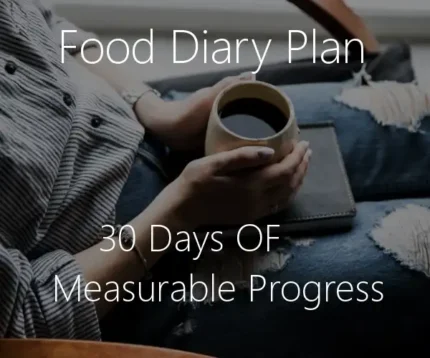10 top tips to Keep Joints Healthy
When first diagnosed with arthritis it’s very easy to lie in bed and let the world pass you by but you must try to improve your current situation, one of the best ways to do that is start to do some light exercise as soon as you feel you are able.
Follow these, 10 top tips to Keep Joints Healthy
Keep Moving
Exercising our joints supplies them with a range of healing nutrients which feed cartilage regeneration and provide the oil like fluids needed for effortless motion.
Movement also cleans away the damaging toxins that are a product of the cellular process.
Joints don’t have an internal pump, like a heart, so movement is essential to joint house keeping, and helping you to keep from stiffening up.
Scientific research has now shown exercise to be cartilage protecting rather than cartilage destroying, as was previously thought. Pumping a joint will build supporting muscles, get you out of that chair, and is the first step on the road to physical wellbeing and cartilage repair.
I rarely sit for more than 30 mins.
Protect Your Joints
Protecting and supporting your joints is vitally important. Wearing the appropriate protection whilst taking part in sporting activities will help you achieve better results and stay healthy.
Your NHS occupational therapist will provide you with products that support your joints and limit deformity. These are free of charge, so there’s no need to spend a fortune or suffer in silence.
If the free supports don’t meet your needs there a huge range of products on the market that may help support your joints and relieve pain. Elasto-gel make a great range of “hot and cold” body supports if you feel you need extra help.
Reduce your weight
Losing those extra pounds can have a dramatic effect on every joint in your body, not just your knees.
Dropping the pounds takes pressure off your knees, hips, back and ankles and helps you to regain full range of motion.
For every pound you lose you remove four pounds of stress from your knees. That’s a lot of pressure that could be contributing to pain, bone erosion and cartilage damage.
Exercise first without the stretching
This one goes against all the conventional wisdom of the exercise industry, but don’t be alarmed.
You are far more likely to suffer from a tear of strain whilst stretching cold muscles. Warming up before stretching will help the joints, tendons and structures move more easily and allow you to easily work up to your desired level of activity.
Remember, you can’t exercise if you pulled a muscle of jarred a joint whilst stretching. And besides stretching before a workout is almost impossible if you have joint damage. Much better to warm up first, and always stretch the muscles out after a workout.
Try to incorporate warm ups, stretching and exercise in your routine at least three times a week.
Take Low Impact Exercise
High impact exercises can jar your joints and damage the structures that hold them in place.
Low impact exercises like cycling, walking, swimming, and rebounding are soft on the joints and great for general fitness.
Try to add some light weight training into your schedule to stop muscle atrophy and degeneration from occurring.
Strengthen your Muscles
If your suffering with rheumatoid arthritis Strengthening your muscles may seem like it’s a way off down the road, but it’s essential to keeping hold of the muscle you have.
Rheumatoid arthritis has taught me that nothing eats muscle away like a long stint in bed. Cutting inflammation, eating right and exercising will all help you stay out of bed and keep you from losing too much muscle mass.
Start small with lightweight dumbells, ankle, and wrist weights, and core exercises, before moving onto the bigger stuff.
Core strength for more strength
All strength comes from your core!
The core provides a solid base to work from and helps you maintain the balance which is vital to keeping good posture and avoiding falls.
Add abdominal, hip, and back exercises to your core workout and minimise the risk of falls and deformity.
My experience has taught me that the only way to strengthen your arms after a serious bout of inflammatory illness is to strengthen the core first. Regain the use of your legs, then strengthen the core. Soon your strength will radiate out towards your shoulders and arms.
Maintain Good Posture
Keeping good posture is important for all people, especially those with arthritis.
Keeping great form whilst sitting and standing can help you avoid problems with deformities as you age. Adding exercises like walking and swimming will help to keep you upright
Next time you feel yourself slouching stand up straight and tall! You’ll look great on the eye, and it’s good for your bones.
Play
Arthritis has taught me that the most important part of life is play.
Seeking fun, joy and aliveness wherever you go is a great aim to have. I would urge you to incorporate that philosophy into your arthritis recovery plan.
I call it life 2.0!
life 2.0 is the second chance we’ve been given to live our lives the way we should of always lived them. Stress free, care free, disease free, happy and alive. Play is the healthiest stuff on the planet, it will keep you fit and active and releases many beneficial chemicals into the system.
Throw out some of that old thinking and start growing young today.
Know Your Limits
Finding the limit of your range of motion is easy…You simply won’t be able to extend an arm or leg past a certain point without feeling pain. Knowing the limit of how hard to push during exercise can be way more tricky.
The general rules I use are as follows:
- If it feels scary put it down
- if it gives you any unusual pain, stop and consider the facts
- if you can’t lift it you are probably trying too hard.
Use lower weight with more reps and remember, no one is counting and this is not a race.
Glucosamine for Knee OA
Supplementation is a great way to give your joints a protective boost and to keep degeneration from happening.
This is Amazon’s best selling Glucosamine and receives great ratings from it’s users.
Glucosamine has been studied many times and has been found to help with arthritis joint pain and stiffness.
Specially selected for you
Here’s to your good health















